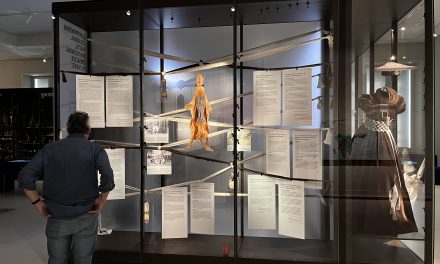The surveillance technology used in cashierless retail establishments heavily monitors customers throughout their shopping experience, breaching consumer privacy. These advanced monitoring systems promote efficiency and a lack of anonymity in day-to-day tasks prompting the question of what customers value more in their shopping experience.
In 2016, cashierless tech was introduced to the retail market, beginning with an Amazon Go grocery store in Seattle, Washington. Since then, cashierless stores have begun emerging around the world, spreading throughout brands in the technology and retail industry.
According to the case study “Amazon Go: Disrupting retail?”, from the Journal of Information Technology Teaching Casenotes, all customers need to participate in cashierless shopping is a working mobile device connected to a credit card which can be tapped or scanned upon entry to the store. Patrons of the establishment are then free to collect items and just walk out.
The specific technological systems used within cashierless retail establishments can vary based on the brand and size of the store. Generally, a combination of cameras, shelf sensors and AI mechanisms are used to monitor customers’ shopping experience from start to finish.

A customer at ALDI Shop and Go browses the chips section while standing below a row of cameras attached to the stores’s celling on February 23, 2023.
According to the article “Cashierless Store, Self-Checkout, Just Walk Out,” retail establishments using cashierless technology contain a network of cameras and sensors which track the customers activity within the store. These cameras track the individual customer throughout the store capturing their movements, while sensors connected to product shelving units monitor the weight of the products to indicate if one has been taken or put back. The camera footage is then paired with the sensor data to connect the customer with the missing item, adding it to their total.
As cashierless establishments continue to increase world-wide, with the use of highly effective tracking systems, a privacy dilemma has developed: should consumer efficiency outweigh personal anonymity.
“There’s no clear answer here,” says Dr. Huib Aldewereld, an artificial intelligence researcher at HU University of Applied Sciences Utrecht, when discussing the privacy concerns of cashierless monitoring technology.
Aldewereld explains that the monitoring system can be an acceptable privacy breach for customers when they are informed about the surveillance, but that the technology could become a privacy violation if used for gathering intelligence.
“For instance, profiling people and remembering whether people might or might not have been paying for certain objects and keeping closer surveillance on them the next time they enter the store,” said Aldewereld.
He continues stating that using the monitoring system to profile customers allows some individuals to be scrutinized more so than others. “That for me is not acceptable, it’s unethical because technology can be wrong,” said Aldewereld. Aldewereld elaborates by explaining that the use of monitoring equipment to remember particular individuals, and pre-emptively judge them on prior actions or assumed actions is an unfair use of technology.
The cashierless technology used to monitor customers in shop and go style stores has both provided consumers with an efficient and fast way to collect and pay for their items in exchange for their privacy, leaving it up to each individual customer to decide what is too much monitoring.




